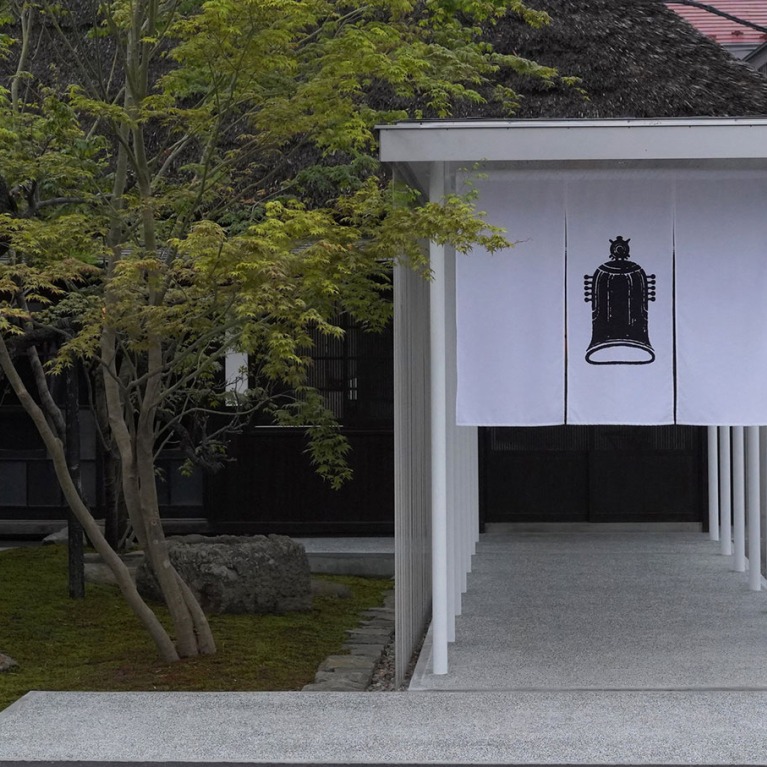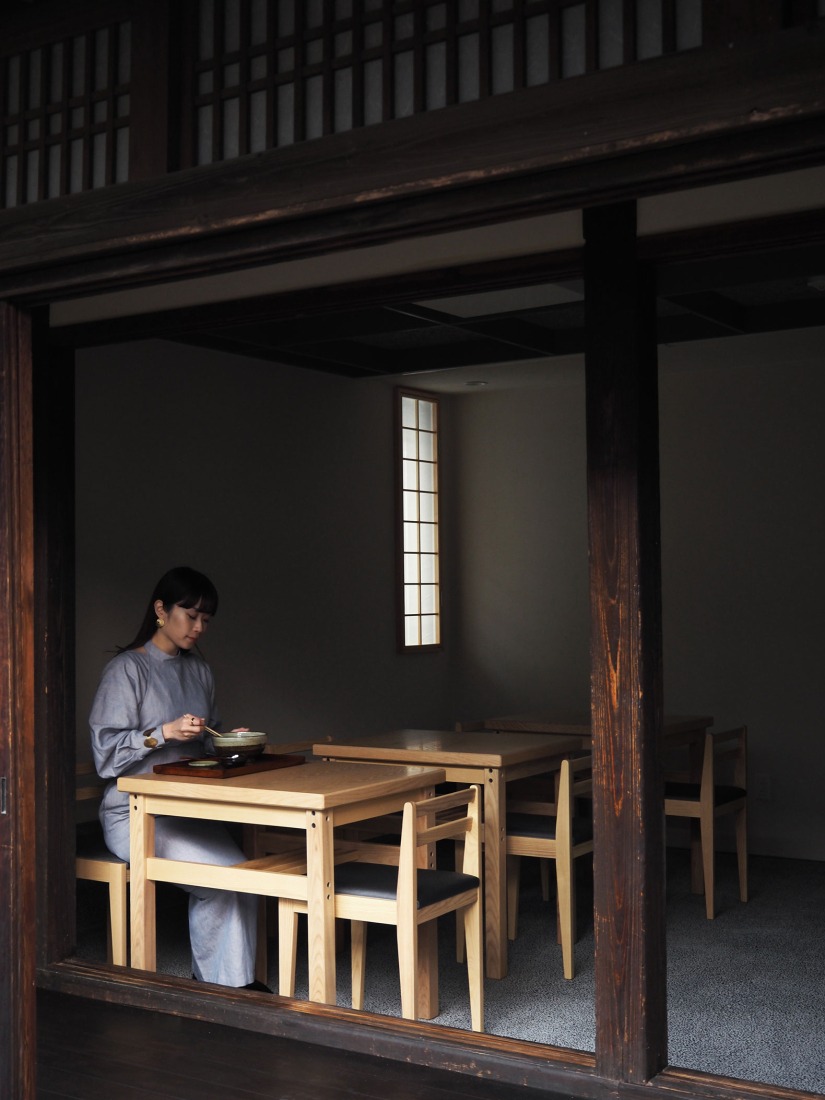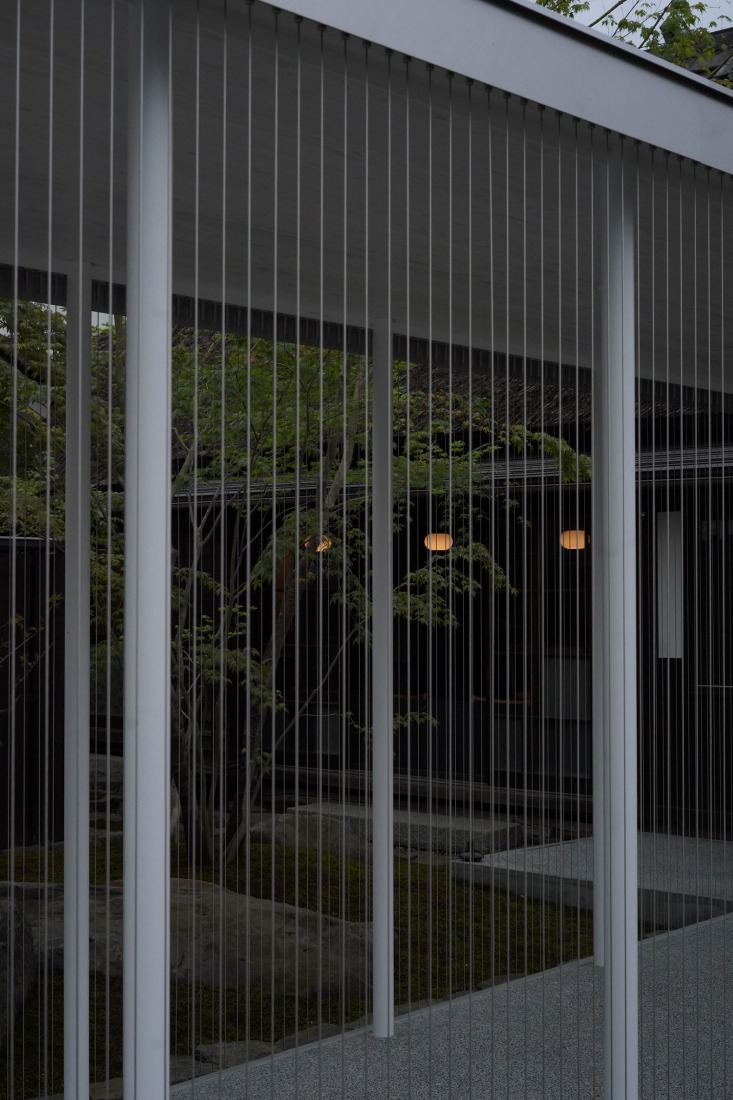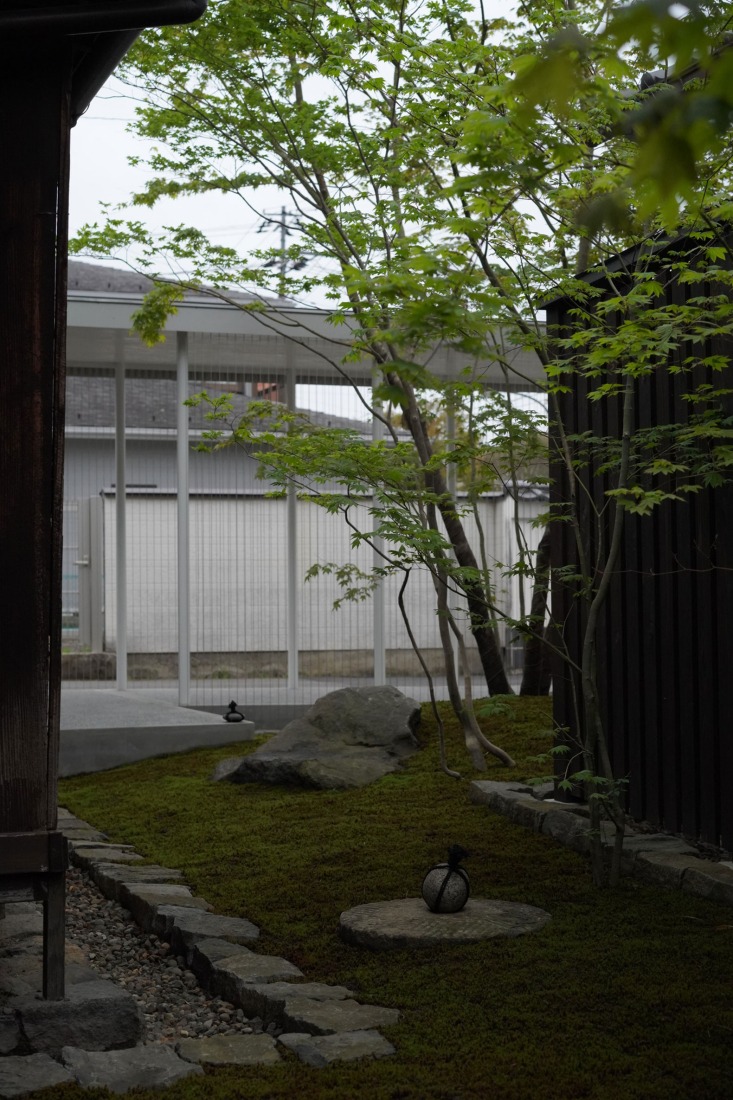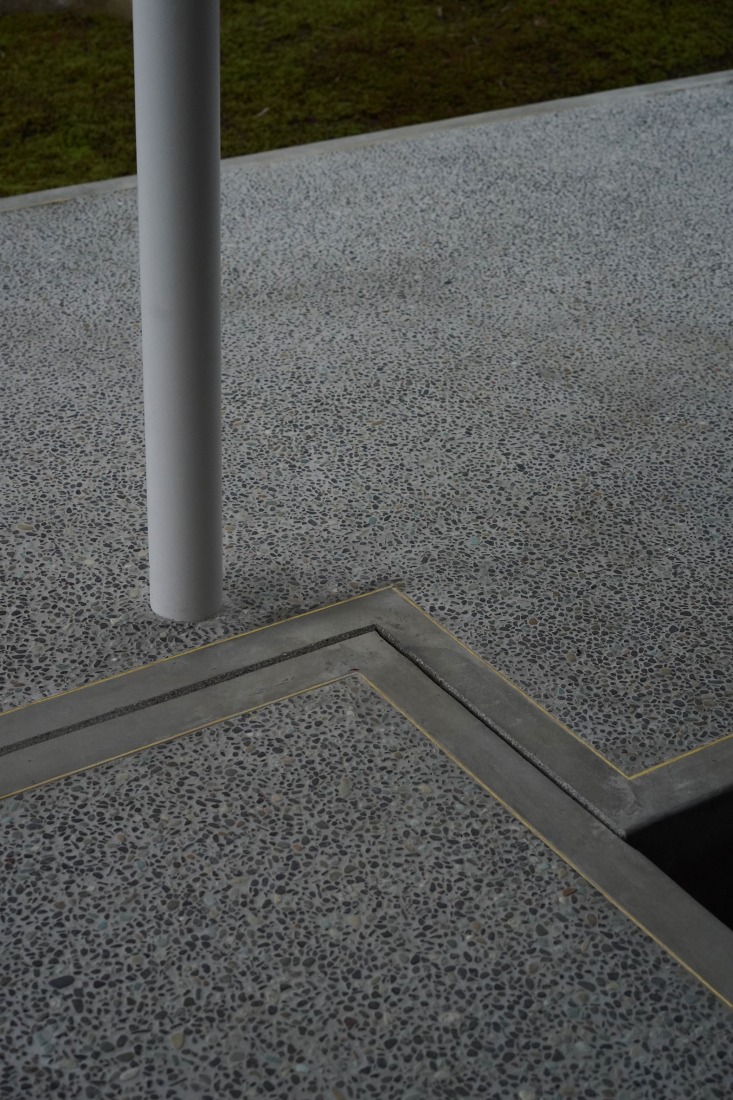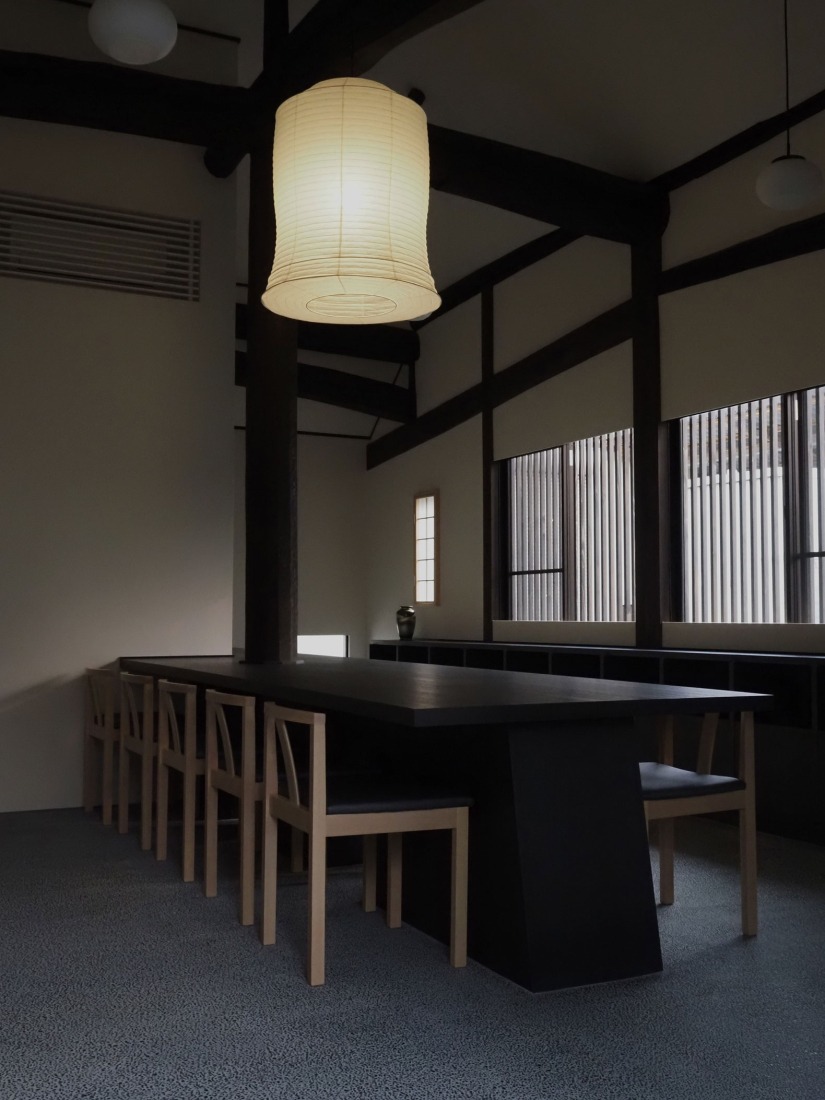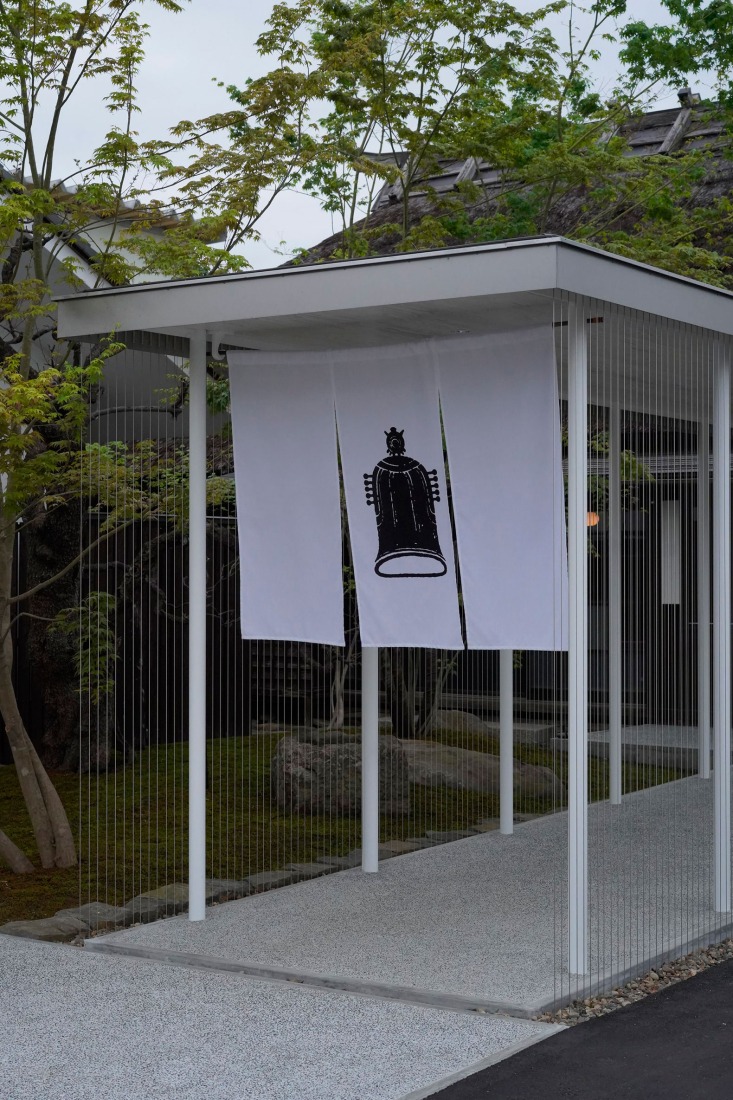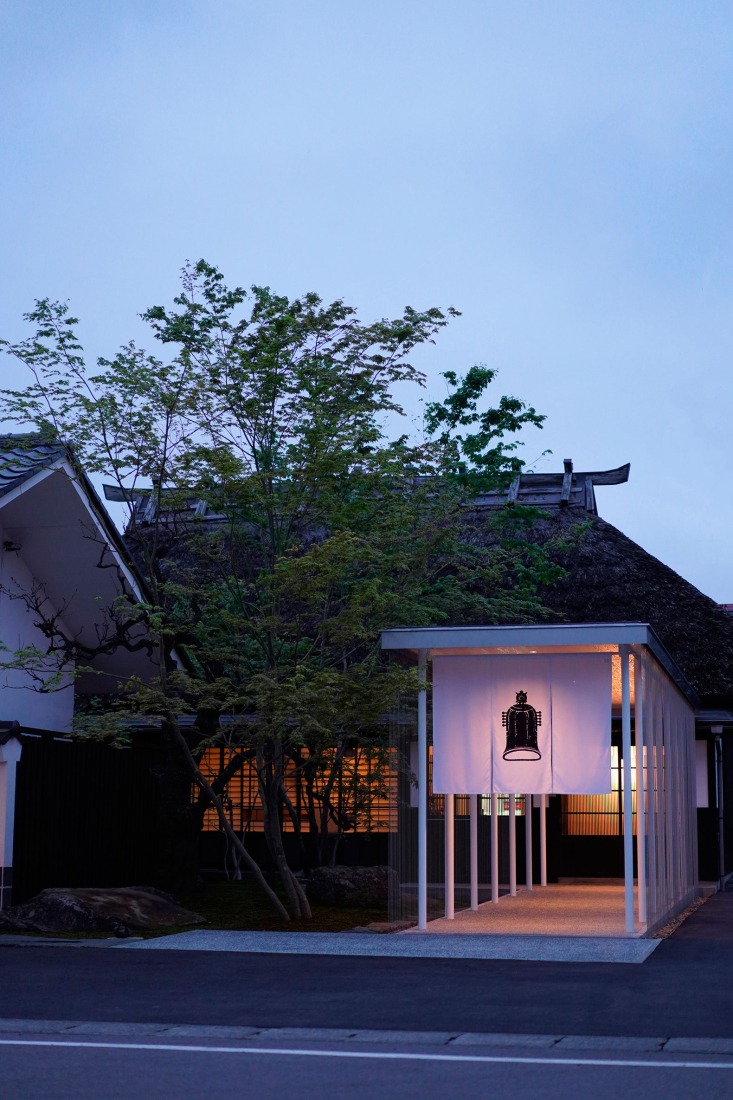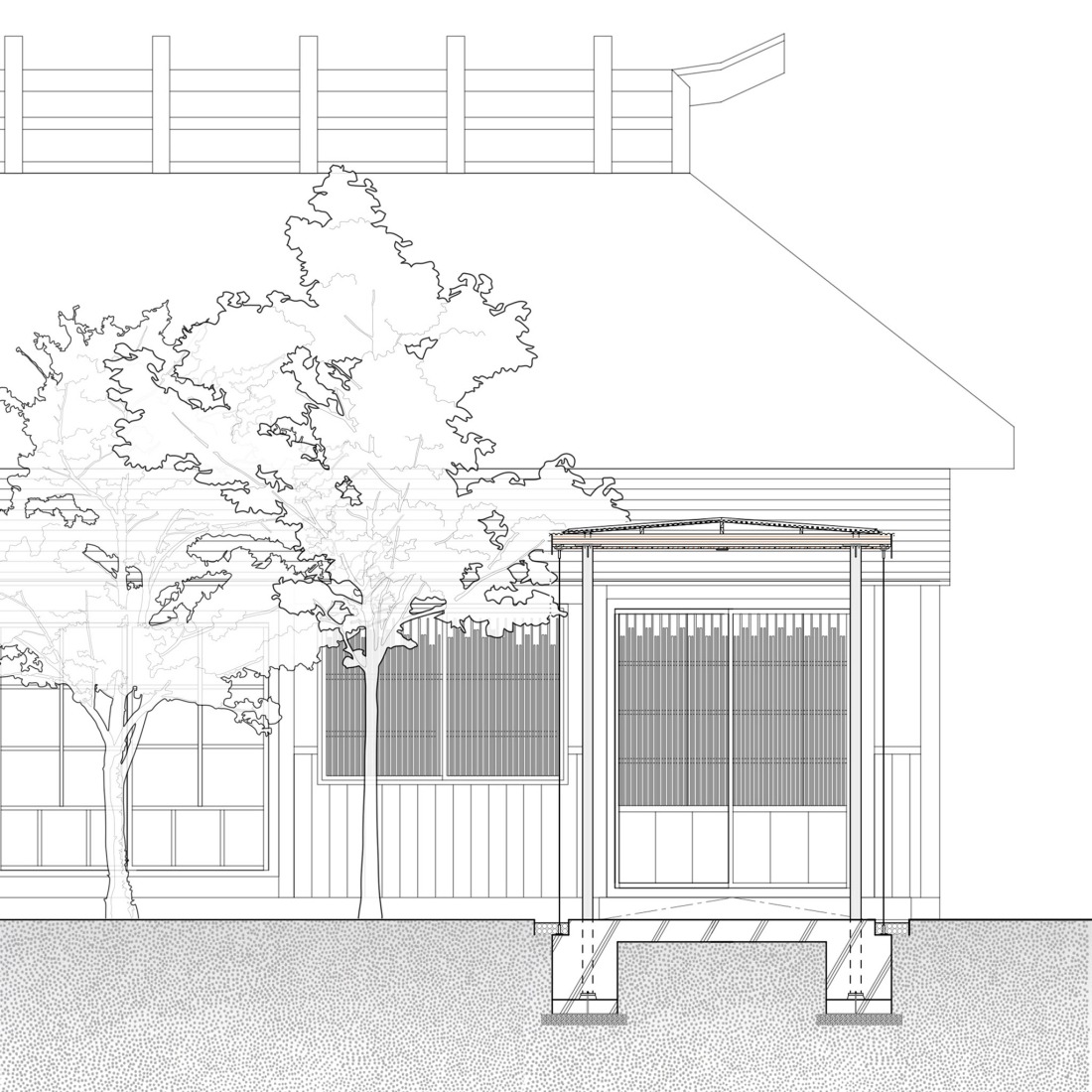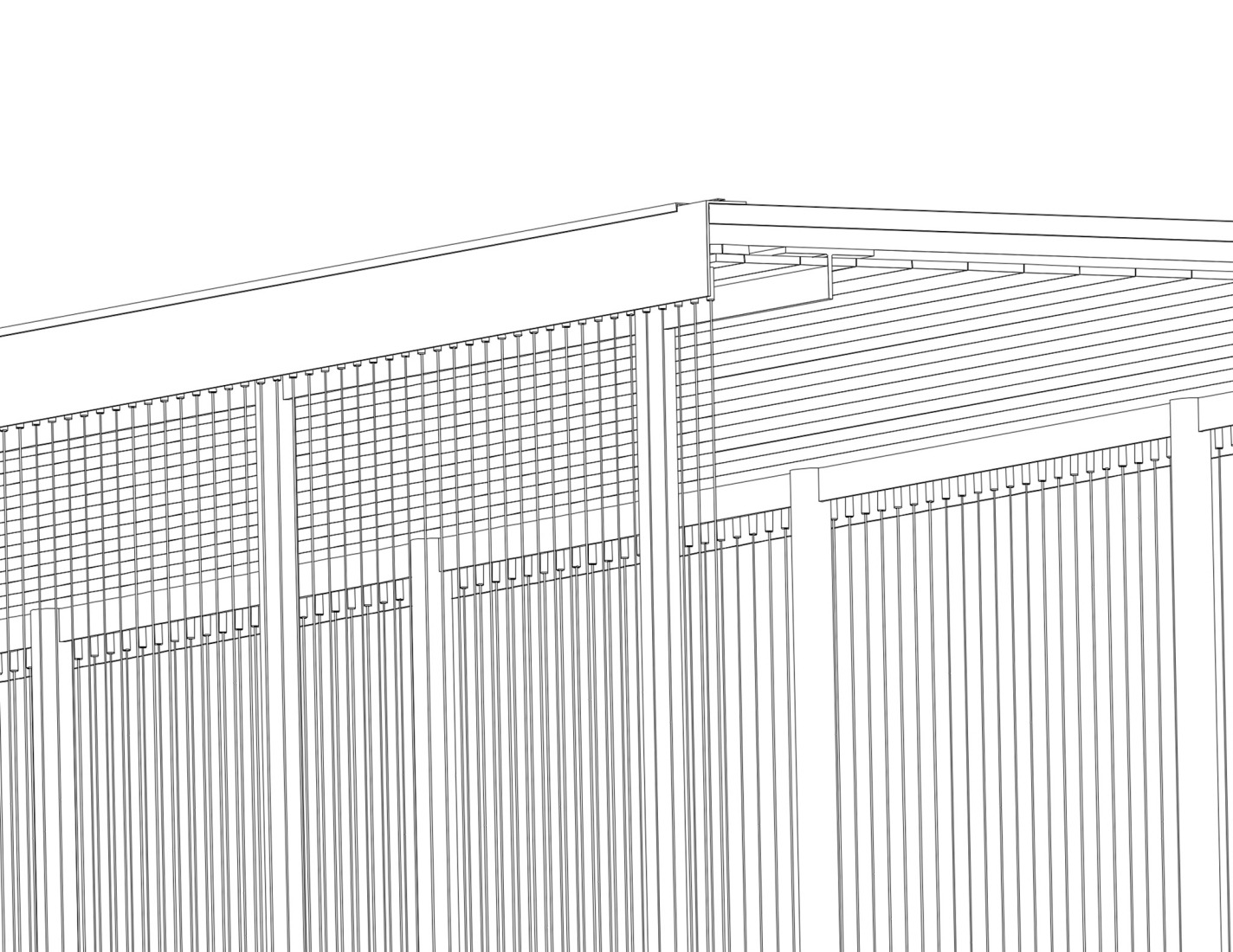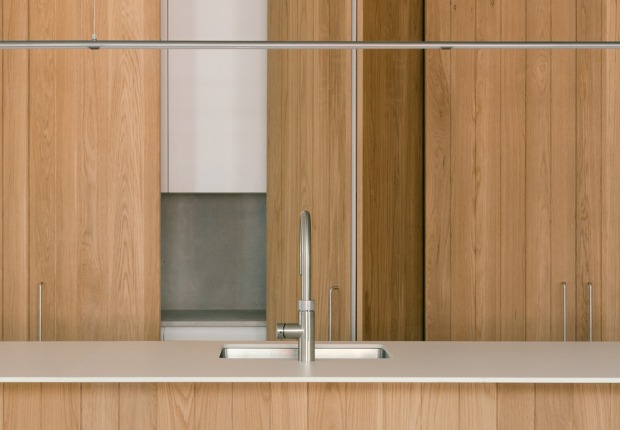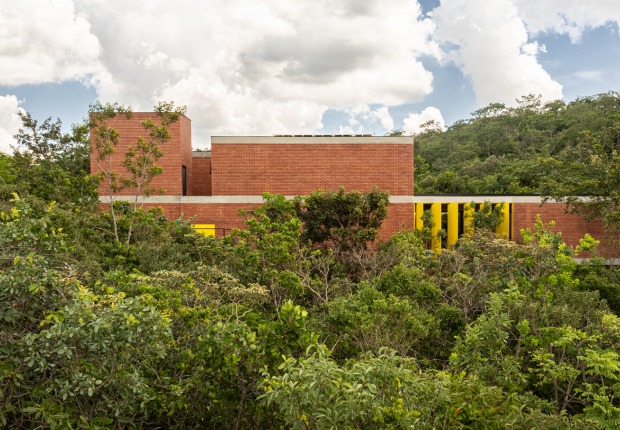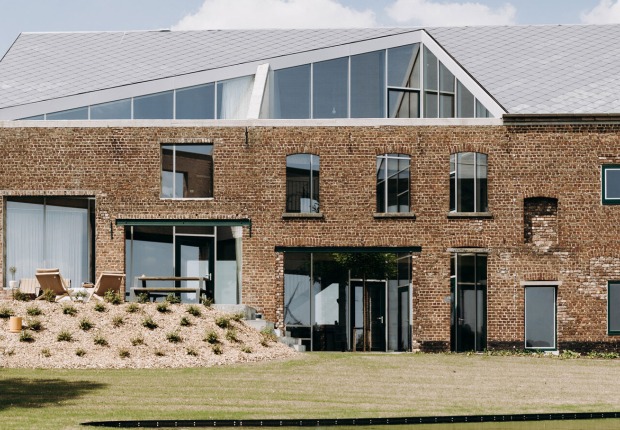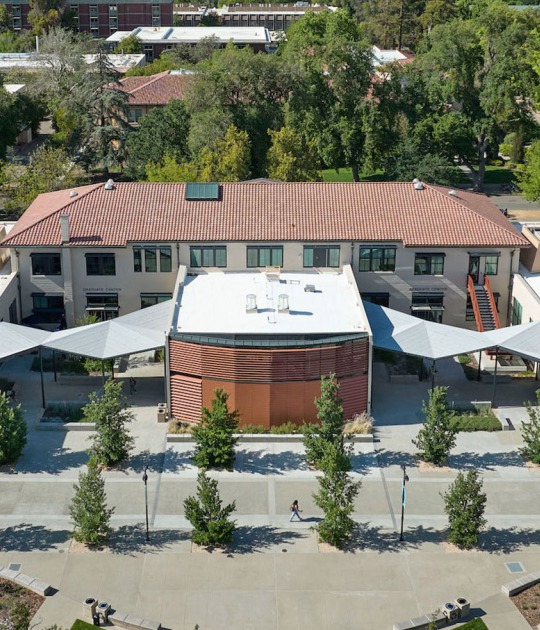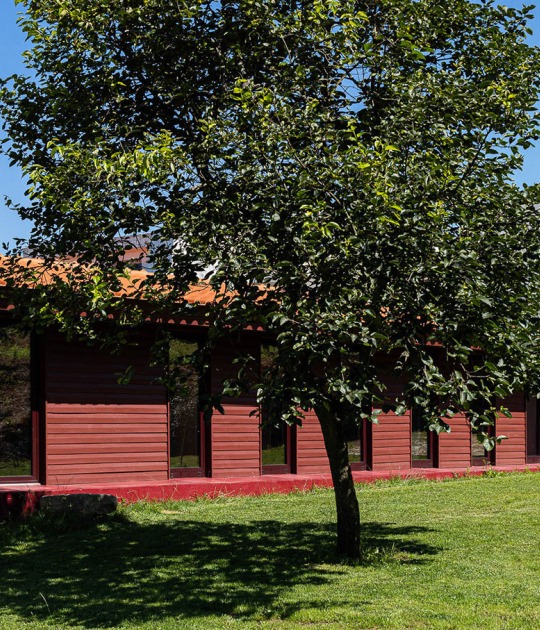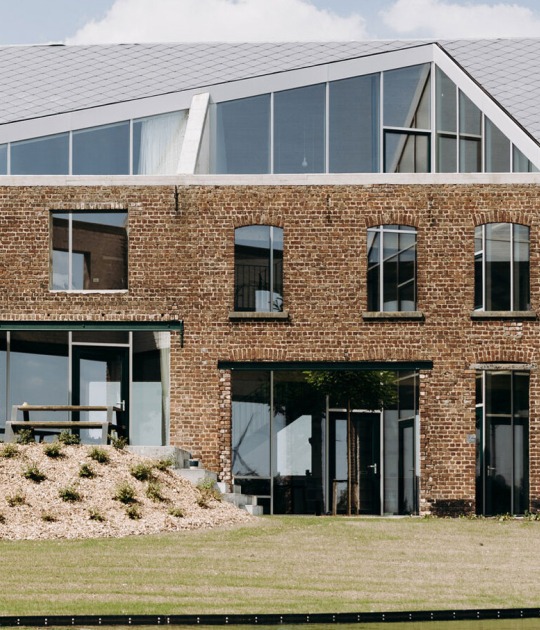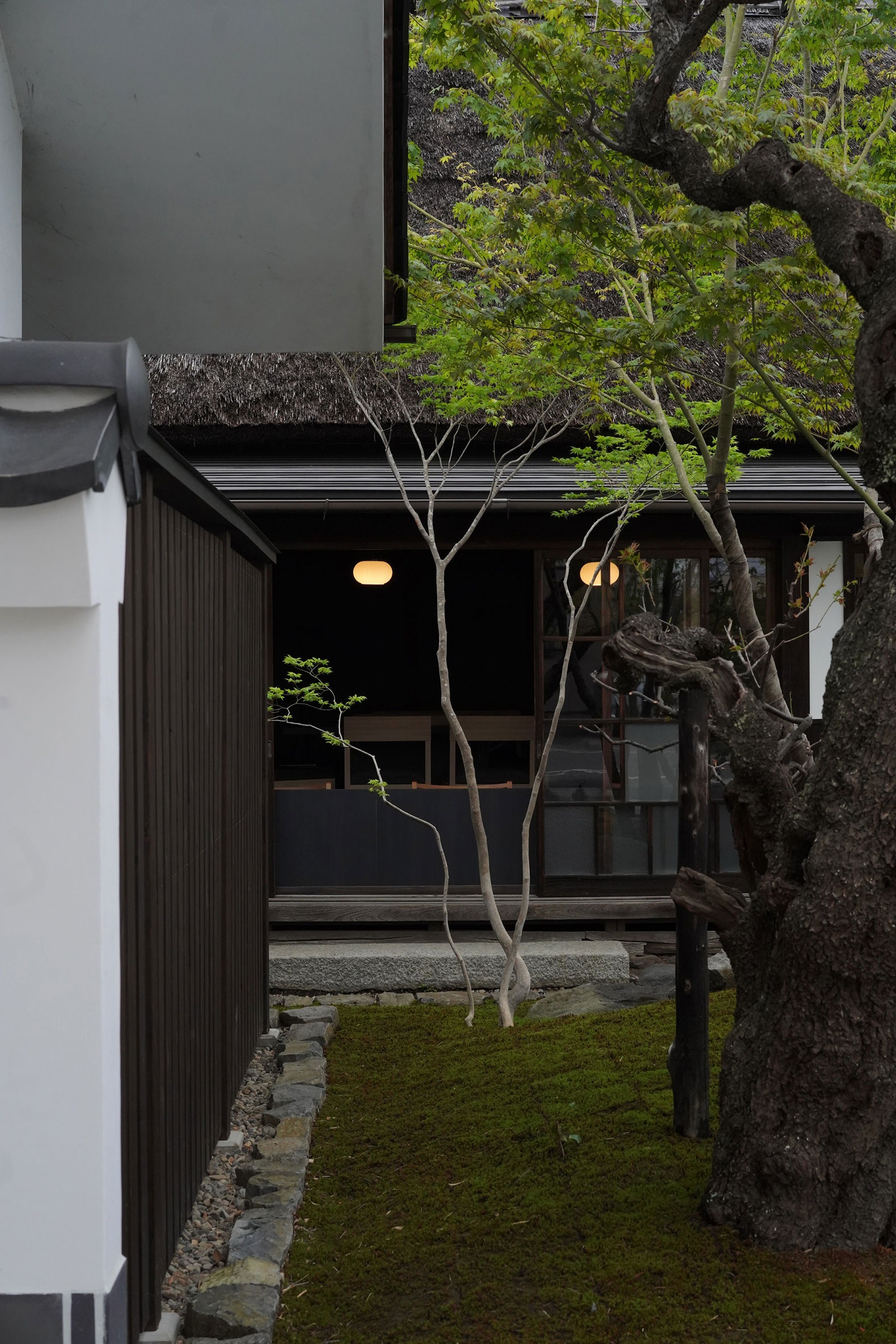
Shotaro Oshima designed the new restaurant on a single floor. The kitchen was relocated to the west side of the building, expanding the space in a north-south direction and exposing the original beams. This resulted in a 44% increase in seating and a 100% increase in the kitchen area. The back room, formerly an employee break room, was converted into a dining room. The existing floor and ceiling were removed, and a new coffered ceiling was built, evoking the prestige of the former samurai residence. The flooring was finished with the same Nachiguro gravel used in the Doma area to emphasise spatial continuity.
The restaurant was designed to offer distinct culinary experiences through four distinct areas: Doma, Irori-no-Ma, Enga, and Okuno-ma. Each space articulates a unique relationship with the original structure and surroundings, combining traditional elements with a contemporary vision. The existing sunken chimney was retained, allowing for the continued periodic fumigation of the thatched roof for its preservation. This structural requirement required preserving the smoke-proof compartments and reconfiguring the floor plan accordingly, respecting the original thermal and spatial qualities.
To allow visibility of the building from the main street, the concrete perimeter wall was demolished, and a new entrance was built. On both sides of the passage, 286 tension cables were installed, evoking the fine lines of noodles. This intervention transforms the building into a contemporary symbol of Shiroishi's traditional hot noodle industry.
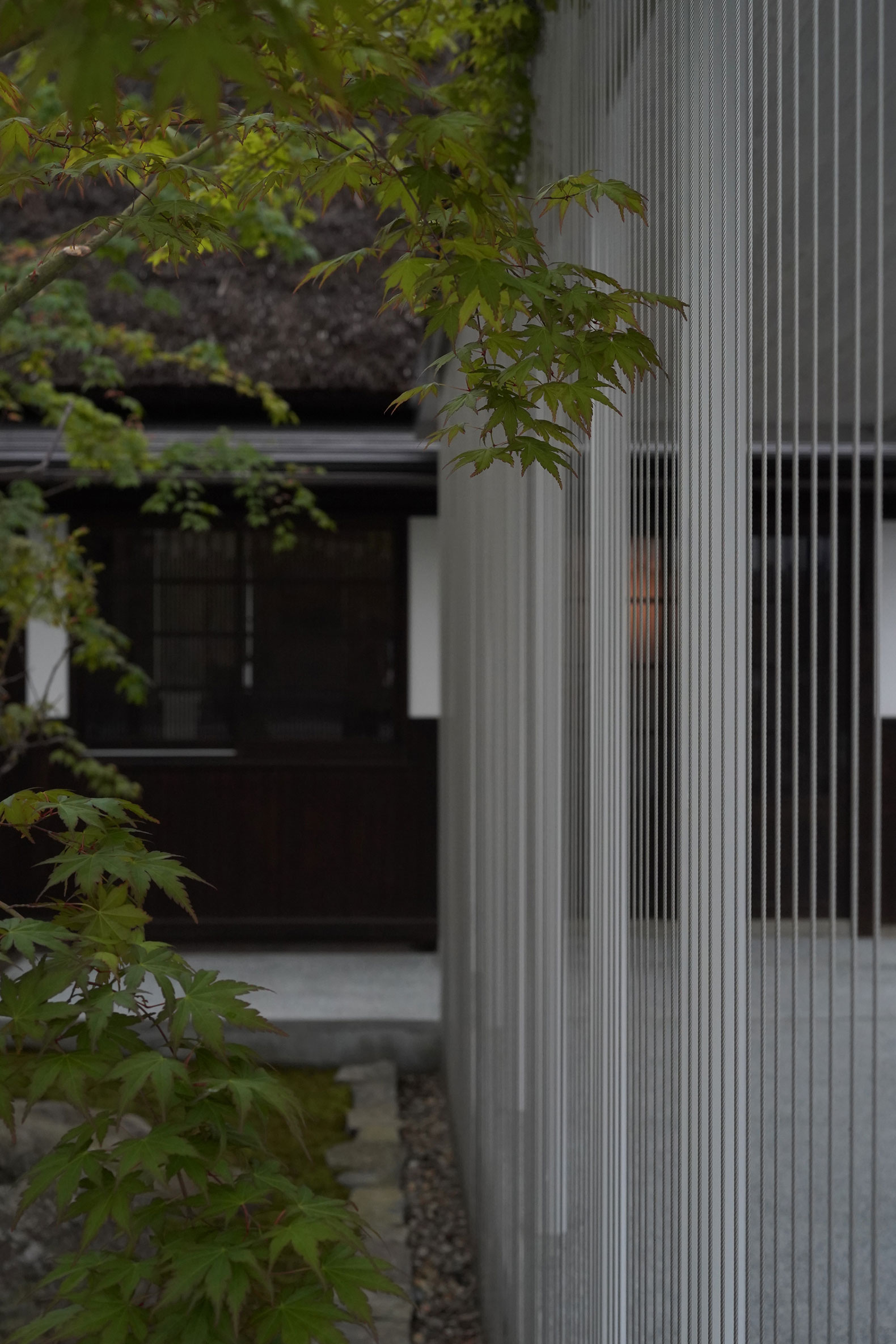
Renovation Project of an old house with thatched roof by Shotaro Oshima. Photograph by S.Kaimai.
Project description by Shotaro Oshima
Founded in 1897, Kichimi Seimen Ltd. has a long history as a long-established manufacturer of Shiroishi hot noodles (Umen), a speciality of Shiroishi City, Miyagi Prefecture. It is said to have a history of 400 years, and the number of Shiroishi hot noodle makers, of which there used to be dozens in the city, has decreased dramatically, with only five companies, including Kichimi Seimen, currently maintaining the traditional taste and production method.
The building that is the subject of the renovation was built as a samurai residence in the Edo period and has been used as a thatched-roofed one-story building for hot noodle restaurants. The project consists of the complete renovation of the existing building, the addition of a new approach from the front road to the entrance, and the planning of a front garden.
There is a sunken hearth inside the existing building, which is regularly fumigated to maintain the thatched roof. To ensure that the work can continue unchanged after the refurbishment, the floor plan was reconfigured while maintaining the existing smoke-proof compartments.

In line with the expansion of the food business, the design was based on a 44% increase in seating area and a 100% increase in kitchen space. The restaurant space was designed to provide different eating experiences in four areas - Doma, Irori-no-Ma, Enga and Okuno-ma.
The kitchen, which had been located on the north side of the Doma, was shifted to the west, maximizing the volume of the Doma space in the north-south direction and exposing the existing beams, which had previously been hidden behind the ceiling.
The back room, which was originally an employee break room, was converted into an eating area. The existing floor and ceiling were removed and the ceiling was finished as a coffered ceiling to abstractly express the prestige of the former samurai residence. To emphasize the connection between the spaces, the floor was finished with the same Nachiguro gravel washout finish as the Doma floor.

The existing building was located behind a concrete wall (as a boundary wall )running from the adjacent shop and office building, making it difficult to see from the front road and spoiling its appearance. In order to create a new order and attractiveness to the front of the building, the existing concrete wall was removed and a new 9 m long approach with eaves was installed, connecting the front road and the entrance to the building.
The design reference for the new approach was the beauty of the neat lines of noodles on a drying table called a ‘hata’, which plays an important role in the production process of Shiroishi hot noodles. In order to express this line (noodle) architecturally as a space, 3φ tension wires were adopted as a material capable of projecting the linear image, and a total of 286 wires were installed on both sides of the new approach. The gradual connection and disconnection with the adjacent front yard changes depending on the angle from which the wires are viewed, and the linear shadows of the wires respond to the garden and thatched building as the sun's altitude fluctuates.
